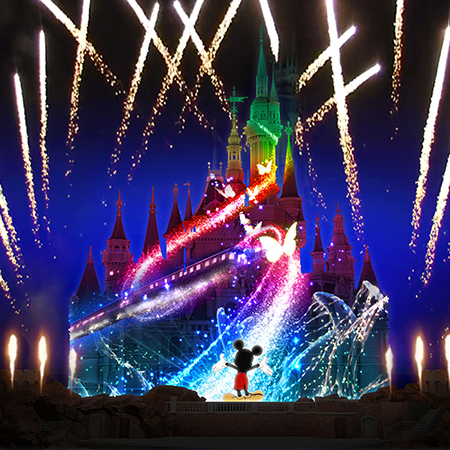|
News Rio de Janeiro is known around the world for sun, sand, samba and soccer (or futebol, as the locals say) But look beyond the clichés and the 451-year-old city offers far more than first meets the eye Though perhaps lacking the iconic status of Ipanema and Copacabana amongst visitors, the city’s central district offers a wealth of history and carioca charm to those willing to venture off the golden sands It's a dynamic commercial and business centre, as well as being home to many of Rio's most traditional bars and restaurants Indeed, few city centres come close to downtown Rio de Janeiro for sheer variety In less than six square kilometres, you’ll find the cradle of Brazilian nationhood, magnificent architecture and splendid churches, botecos (bars) brimming with character and culture on every corner Palácio Tiradentes, on the Praça XV de Novembro, is at the heart of Rio's historic centre (Photo: Ana Christ) To appreciate Rio’s past is to begin to understand Rio beyond the beach From its foundation in 1565, the city rose to become capital of the Brazilian colony in 1763 and then the seat of the Portuguese empire in 1808, as the Napoleonic Wars in Europe saw the Portuguese royal family flee their homeland Five centuries of change: Rio's history told through its glorious architecture The arrival of these royal refugees ushered in a golden age for Rio de Janeiro, as it became the only capital city of a European empire located on a different continent The Royal Portuguese Reading Room holds a vast literary collection (Photo: Riotur/Alexandre Macieira) For 13 years, Brazil was the seat of an imperial power spanning territories around the globe After King João VI returned to Lisbon, his son, Dom Pedro, declared Brazil to be independent in 1822 His successor Dom Pedro II then reigned until the establishment of the first Brazilian Republic in 1889 The elevation of Rio de Janeiro from colonial outpost to imperial capital saw the construction of numerous magnificent buildings, many of which survive today, attesting to the scale of its rulers' ambition – to build a modern capital in the opulent European style Formerly a customs centre, Ilha Fiscal is today open to the public ( Photo: Riotur/Alexandre Macieira) Though no longer part of the nation's capital (since 1960, that honour has belonged to Brasilia) downtown Rio, known as Centro in Portuguese, is home to many of the country’s most ornate churches and much stunning architecture To this day, this region of town remains an important centre for business and commerce The stunning interior of the Igreja da Ordem Terceira de São Francisco (Photo: UNESP/Percival Tirapeli) Currently undergoing a major period of revitalisation, downtown Rio showcases more than 450 years of Brazilian history while looking to the future, literally so in the case of the latest ambitious project to come to life – the Museum of Tomorrow, part of the renovated port area The Museum of Tomorrow is a striking addition to Rio's downtown area (Photo: Riotur/Alexandre Macieira) Thanks to Riotur and Nativos do Mundo for use of photos, more of which can be seen below: The classical facade of the Brazilian Academy of Letters contrasts with the modern Santos Dumont tower in Rio's downtown area Photo: Alexandre Macieira/Riotur The Brazilian National Library, located in Cinelândia, is the largest in Latin America, and the seventh largest of its kind in the world Photo: Alexandre Macieira/Riotur The Ilha Fiscal, formerly a customs centre for foreign shipping calling at Rio de Janeiro, is today open to the public Photo: Alexandre Macieira/Riotur The Paço de São Cristóvão houses the National Museum Located just outside the central district in the city's northern zone, the building was completed in 1821 Photo: Alexandre Macieira/Riotur The Royal Portuguese Reading Room (Real Gabinete Português de Leitura) was founded in 1837 and houses a vast collection of lusophone literature Photo: Alexandre Macieira/Riotur The collection's 350,000 items are housed in a Neo-Manueline building, which was completed in 1887 Photo: Roberto Tietzmann The magnificent Municipal Theatre, completed in 1909, was inspired by the Opéra Garnier in Paris Photo: Alexandre Macieira/Riotur Palácio Tiradentes, here seen from the Paço Imperial, on the Praça XV de Novembro, is at the heart of Rio's historic centre Photo: Ana Christ Parts of Rio's central district retain their imperial splendour; this view of the Igreja Nossa Senhora da Lapa dos Mercadores is one of many charming scenes in the area Photo: Ana Christ In Cinelândia, the Municipal Chamber can be seen with the striking Amarelinho building in the background Photo: Ana Christ Rio is also notable for its beautiful churches, including Nossa Senhora do Carmo da Antiga Sé, the royal chapel which saw the crowning of emperors Dom Pedro I and Dom Pedro II Photo: Alexandre Macieira/Riotur The interior of this Benedictine abbey church is ornately decorated in Baroque and Rococo style, making for a magnificent visual spectacle Photo: Alexandre Macieira/Riotur The stunning interior of the Igreja da Ordem Terceira de São Francisco da Penitência rivals even that of São Bento Photo: Percival Tirapeli/UNESP Lovers of coffee and cake can bask in splendid surroundings: the Confeitaria Colombo takes patrons back to Rio de Janeiro's belle époque period Photo: Riotur Traditional city centre bars like Armazém do Senado showcase another side to caricoca culture – informal samba performances to be enjoyed with cold beer or aged cachaça Photo: Alexandre Macieira/Riotur A short tram ride from the city centre brings visitors to Santa Teresa, Rio's bohemian hillside village Traditional bars like Armazém São Thiago abound Photo: Alexandre Macieira/Riotur Street markets are an important part of life in Rio; this one in the Lapa district, near the city centre, operates on the first Saturday of the month Photo: Alexandre Macieira/Riotur As well as the birthplace of the Brazilian nation, Rio is the cradle of many cultural movements Pedra do Sal is a popular spot for an informal 'roda de samba' Photo: Alexandre Macieira/Riotur Though history and tradition play an important part in the city's identity, modern Rio has its eye on the future The VLT light rail system was inaugurated this year Photo: Mario Tama/Getty Images Formerly a run-down intersection of highways, Praça Mauá has recently been transformed into an open public space as part of the revitalisation of the port district Photo: Alexandre Macieira/Riotur The centrepiece of the Praça Mauá renovation is the brand-new Museum of Tomorrow, a striking addition to Rio's unique downtown district Photo: Alexandre Macieira/Riotur |
Rio beyond the beach: culture, history and character await visitors to the bustling centre of the Olympic city
August 20, 2016
VIEWED: 0
Recommended Products
see all-
Shanghai Disneyland E-Ticket
HKD 325 + Book -
Taiwan Chunghwa Telecom 4G SIM (5 Days)
HKD 118 + Book




